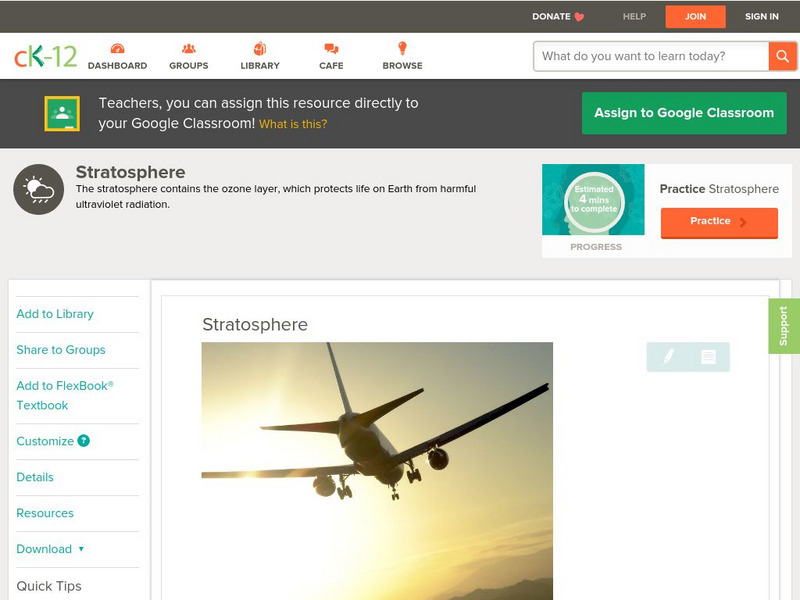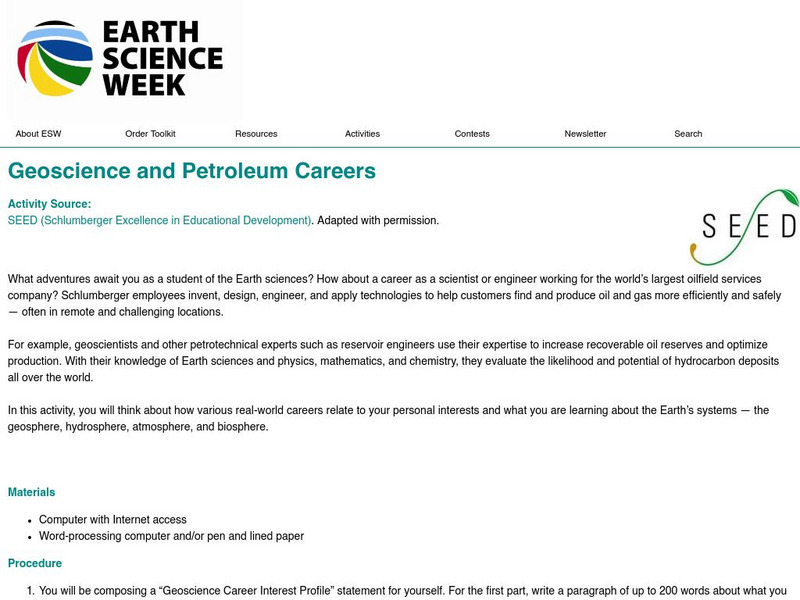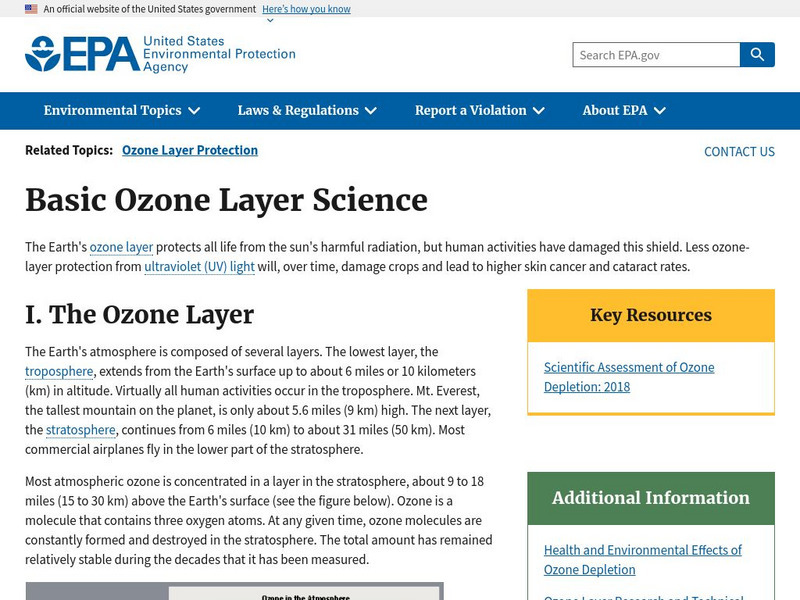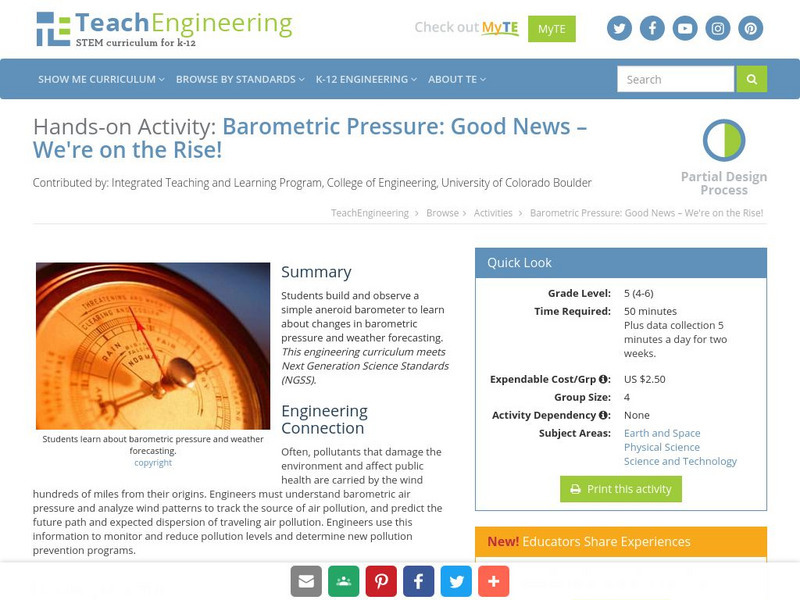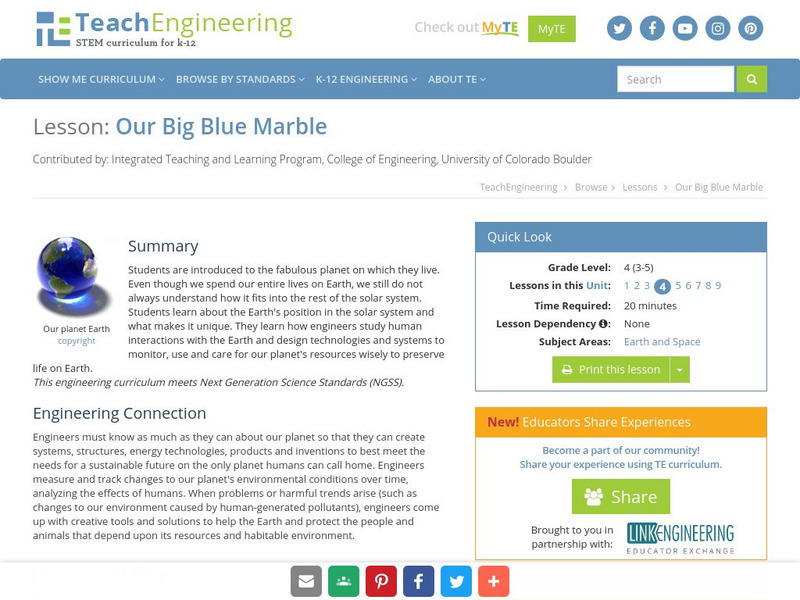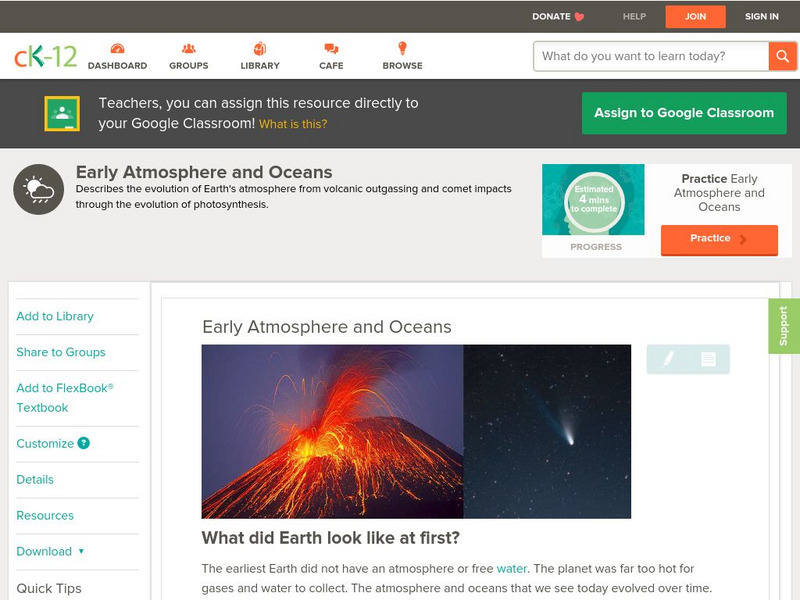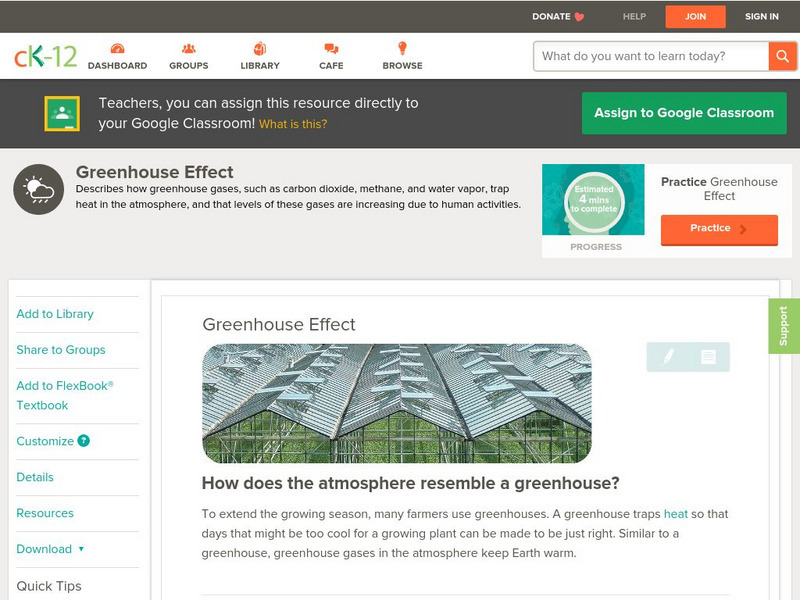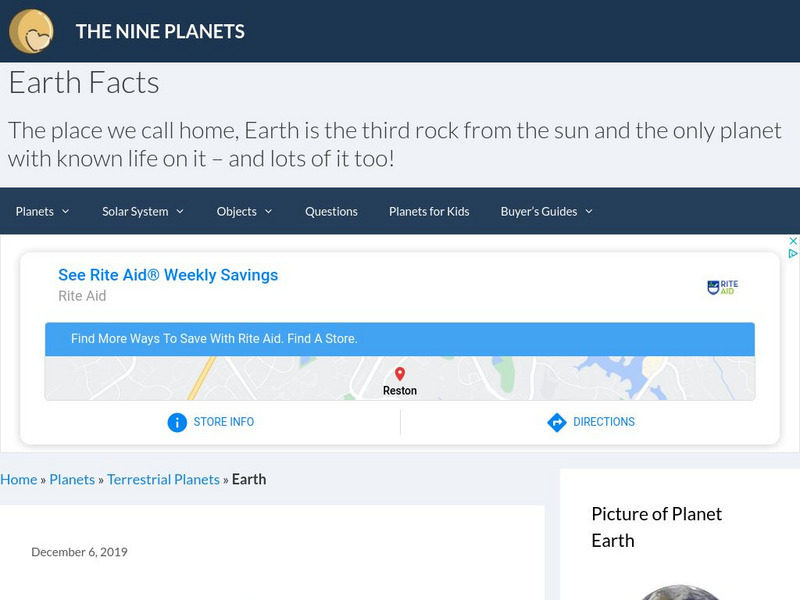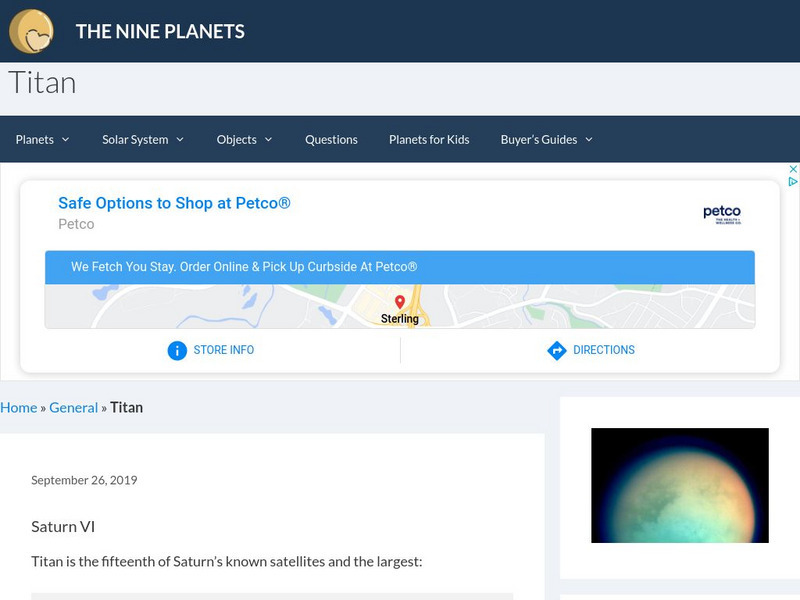CK-12 Foundation
Ck 12: Earth Science: Stratosphere
[Free Registration/Login may be required to access all resource tools.] Describes the properties of the stratosphere.
CK-12 Foundation
Ck 12: Earth Science: Troposphere
[Free Registration/Login may be required to access all resource tools.] Characteristics of the troposphere.
Other
Howto smile.org: From Gas to Liquid to Solid
Allow your students to explore states of matter as they learn what causes frost to form on the outside of a cold container. Students will observe how liquid water can change to ice or water vapor in this lab. Lesson includes background...
American Geosciences Institute
American Geosciences Institute: Earth Science Week: Geoscience and Petroleum Careers
In this activity, students think about how various real-world careers relate to personal interests and Earth's systems- the geosphere, hydrosphere, atmosphere, and biosphere.
American Geosciences Institute
American Geosciences Institute: Earth Science Week: Look Up!
Get ready to set a course for sky exploration. The following activity is designed to help students learn to listen, read, and communicate in both written and oral formats about the sky.
American Chemical Society
Middle School Chemistry: Air, It's Really There
Explore the properties of air, and what happens to air when heated and cooled.
US Environmental Protection Agency
Epa: Basic Ozone Layer Science
This site from the U.S. Environmental Protection Agency provides general information about ozone damage.
TeachEngineering
Teach Engineering: Good News We're on the Rise!
Students build and observe a simple aneroid barometer to learn about changes in barometric pressure and weather forecasting.
TeachEngineering
Teach Engineering: Air Pressure
Air pressure is pushing on us all the time although we do not usually notice it. This activity will discuss the units of pressure and give the students a sense of just how much air pressure is pushing on them.
TeachEngineering
Teach Engineering: Space Shelter
The invasion has taken place and we need to find a new home. To ensure your survival beyond earth's occupation you must design a shelter that can be built on another planet. Students will research the characteristics of a planet of their...
TeachEngineering
Teach Engineering: Got Dirty Air?
This lesson introduces students to the concepts of air pollution and technologies that have been developed by engineers to reduce air pollution. Students develop an understanding of visible air pollutants with an incomplete combustion...
TeachEngineering
Teach Engineering: Our Big Blue Marble
Students are introduced to the fabulous planet on which they live. Even though we spend our entire lives on Earth, we still do not always understand how it fits into the rest of the solar system. Students learn about the Earth's position...
TeachEngineering
Teach Engineering: Weather Basics
Students are introduced to the basics of the Earth's weather. Concepts include fundamental causes of common weather phenomena such as temperature changes, wind, clouds, rain and snow. The different factors that affect the weather and the...
Mocomi & Anibrain Digital Technologies
Mocomi: Carbon Cycle
The carbon cycle is one of the most important cycles. It is the biogeochemical cycle by which carbon is exchanged among the biosphere, pedosphere, geosphere, hydrosphere, and atmosphere of the Earth. This cycle is important because it...
CK-12 Foundation
Ck 12: Earth Science: Coriolis Effect
[Free Registration/Login may be required to access all resource tools.] Describes the Coriolis effect.
CK-12 Foundation
Ck 12: Earth Science: Early Atmosphere and Oceans
[Free Registration/Login may be required to access all resource tools.] How Earth's atmosphere and oceans formed.
CK-12 Foundation
Ck 12: Earth Science: Early Atmosphere and Oceans
[Free Registration/Login may be required to access all resource tools.] How Earth's atmosphere and oceans formed.
CK-12 Foundation
Ck 12: Earth Science: Greenhouse Effect
[Free Registration/Login may be required to access all resource tools.] Explains the greenhouse effect and how humans affect the greenhouse gas level.
CK-12 Foundation
Ck 12: Earth Science: Heat Budget of Planet Earth
[Free Registration/Login may be required to access all resource tools.] The balance of heat entering and exiting Earth's atmosphere.
CK-12 Foundation
Ck 12: Earth Science: Importance of the Atmosphere
[Free Registration/Login may be required to access all resource tools.] The atmosphere provides many important functions for Earth.
US Environmental Protection Agency
Epa: Mobile Source Air Toxics
Links to fact sheets, articles, and educational tools on air pollution.
Nine Planets
The Nine Planets: Earth
A detailed physical description of Earth. Content includes information on the Earth's layers and geology of the surface, along with links to additional information.
Nine Planets
The Nine Planets: Titan
This site from The Eight Planets shows that Titan may serve as a model of a highly reduced early Earth atmosphere in which the first stages of organic chemical evolution could take place in the atmosphere.
NASA
National Aeronautics and Space Administration: Scijinks: Atmosphere
Activity describing how the Earth's atmosphere was formed, why it stays close to the Earth, and why the sky is blue.


